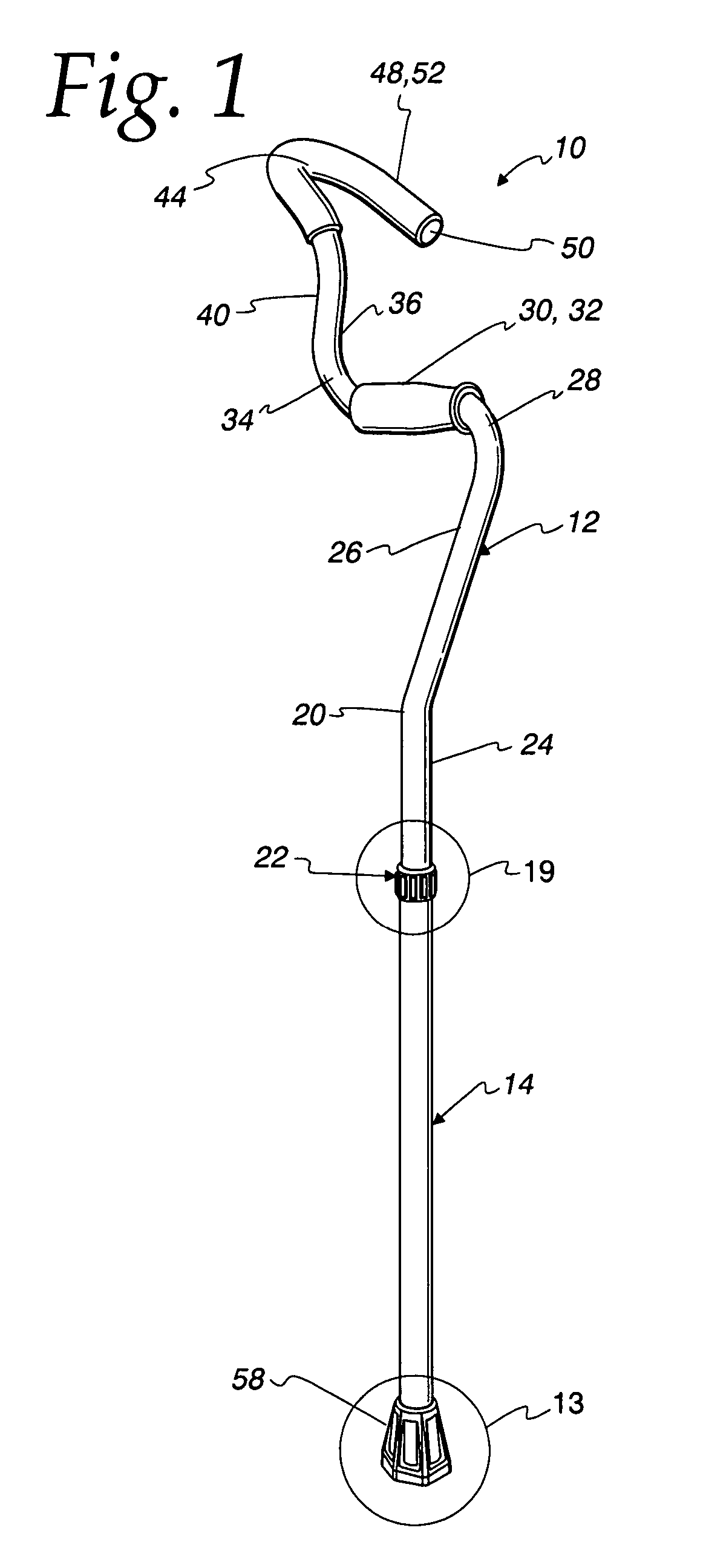Mobility device
a technology for ambulatory support and mobility devices, applied in the direction of crutches, walking aids, physical therapy, etc., can solve the problems of difficulty in walking, climbing stairs and otherwise negotiating, slow progress, and impairing the ability of people to acquire and maintain stability
- Summary
- Abstract
- Description
- Claims
- Application Information
AI Technical Summary
Benefits of technology
Problems solved by technology
Method used
Image
Examples
Embodiment Construction
[0041]The invention disclosed herein is, of course, subject to many possible embodiments. Shown in the drawings and described below in detail are preferred embodiments of the invention. It is to be understood, however, that the present disclosure is an exemplification of the principles of the invention and does not limit the invention to the illustrated embodiments.
[0042]For ease of description, mobility devices embodying the present invention are described herein in their usual assembled position as shown in the accompanying drawings, and terms such as upper, lower, horizontal, longitudinal, etc. may be used herein with reference to their usual position. However, the mobility devices may be manufactured, transported, sold or used in orientations other than that described and shown herein.
[0043]Referring now to the drawings, and initially to FIGS. 1-7, a mobility device is generally indicated at 10. Included is a tubular body having an upper portion 12 and a lower portion 14. Body p...
PUM
 Login to View More
Login to View More Abstract
Description
Claims
Application Information
 Login to View More
Login to View More - R&D
- Intellectual Property
- Life Sciences
- Materials
- Tech Scout
- Unparalleled Data Quality
- Higher Quality Content
- 60% Fewer Hallucinations
Browse by: Latest US Patents, China's latest patents, Technical Efficacy Thesaurus, Application Domain, Technology Topic, Popular Technical Reports.
© 2025 PatSnap. All rights reserved.Legal|Privacy policy|Modern Slavery Act Transparency Statement|Sitemap|About US| Contact US: help@patsnap.com



